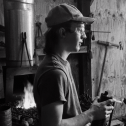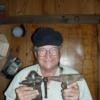-
Posts
2,607 -
Joined
-
Last visited
Content Type
Profiles
Forums
Articles
Gallery
Downloads
Events
Everything posted by Frank Turley
-
College Station caught my eye. I demonstrated horseshoe making for the then farrier instructor quite a few years ago in College Station. The first thing, his wife asked me if I knew how to make coffee. I said that I did. She apologized and said they didn't know how but had bought a coffee maker in case I knew how. I thanked her and asked her what they drank instead. "Well, we drink iced tea all day long, she replied. I now know that iced tea is pretty much standard fare in Texas.
-

Thanks for sharing that, put a smile on my face! Funny thing is that I can't stand sweet tea! My brother once had a big cup full of it, but he told me it was coke, and that I could have some. So, I took a big gulp of it, and just about threw it up!
This is probably a long shot, but I'll try anyway. By any chance do you know Jay Nesmier (not sure if I spelled his last name right)? he's a farrier here in town, one I'm good friends with, real nice guy.
-

